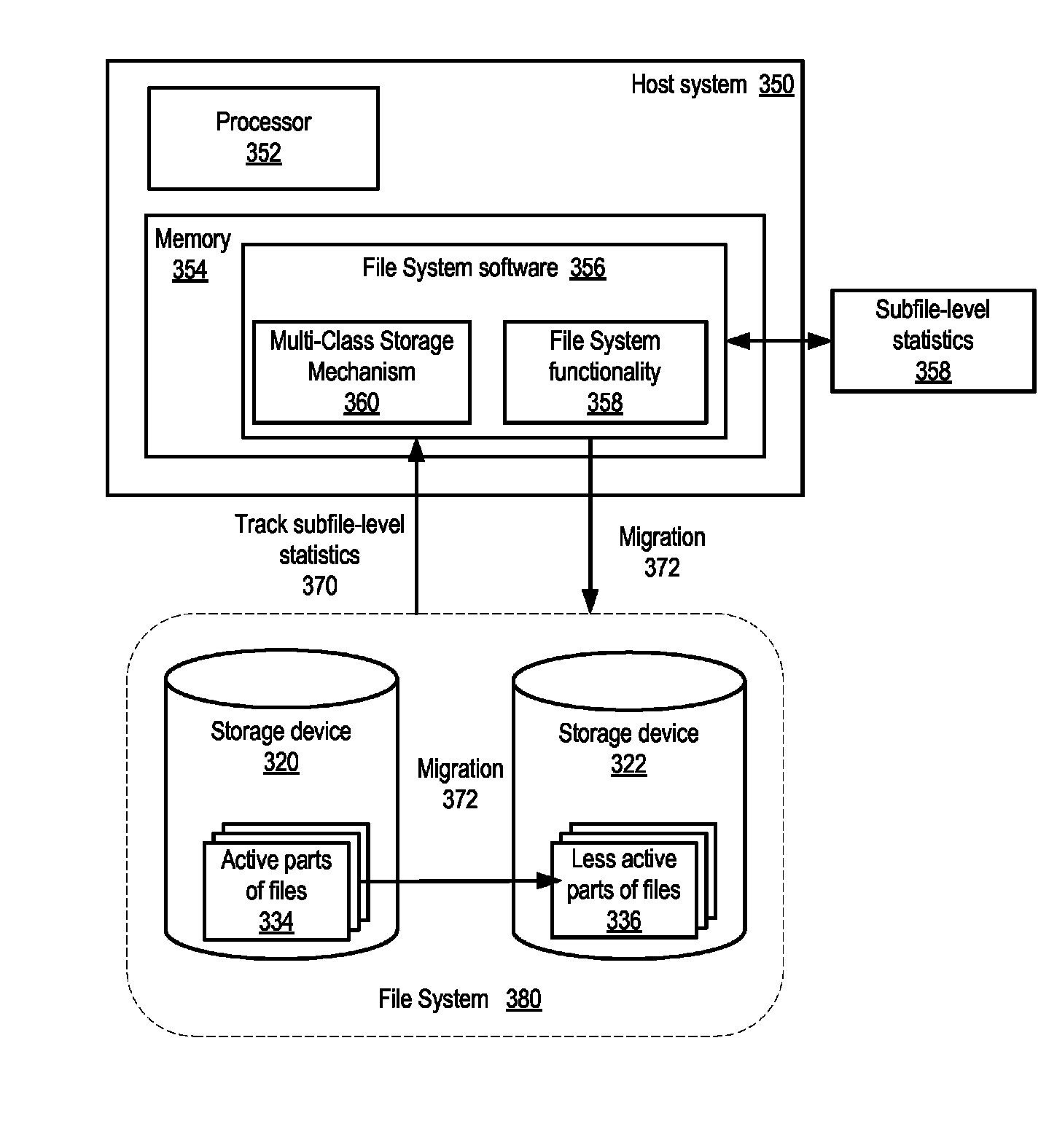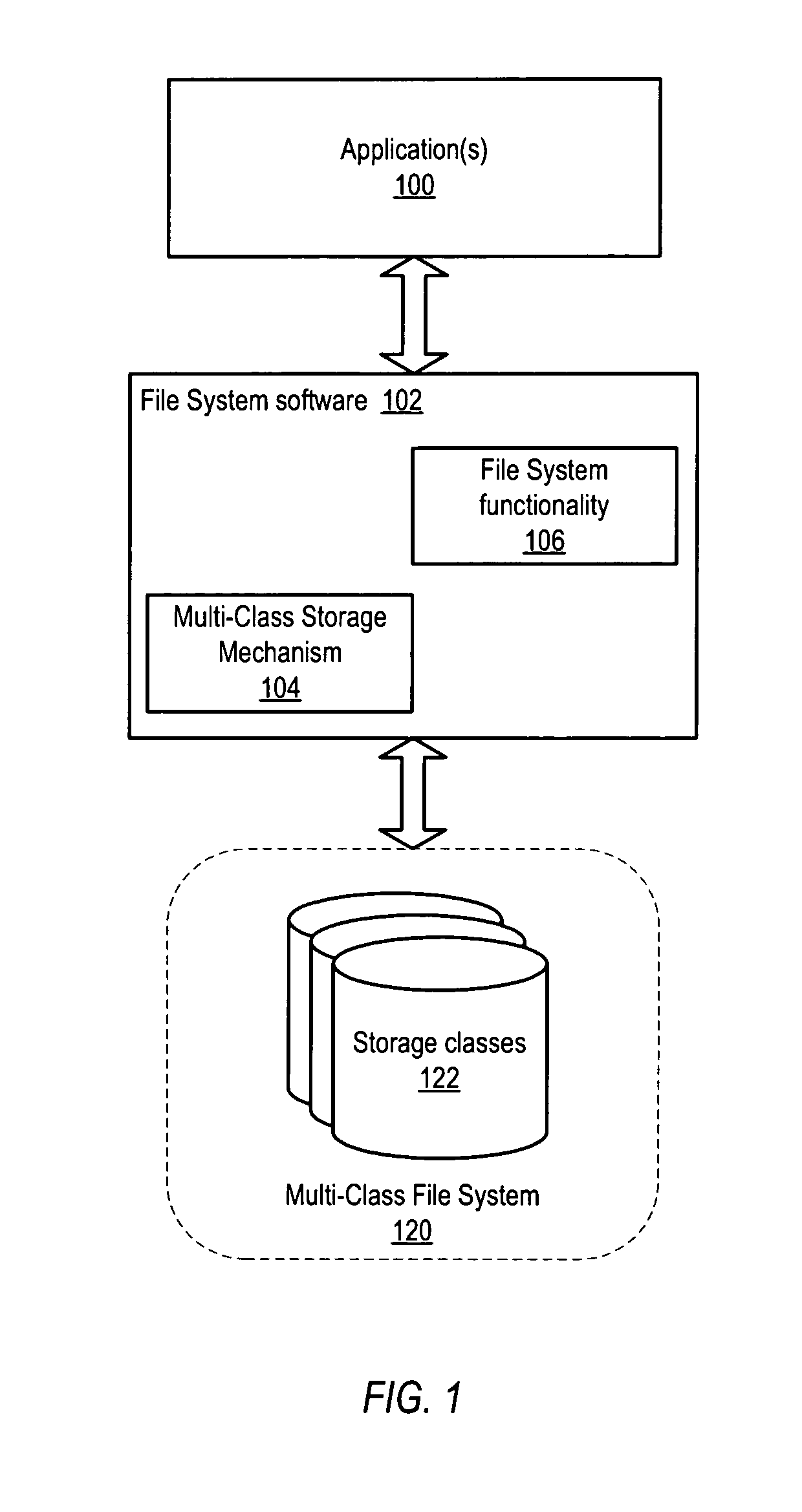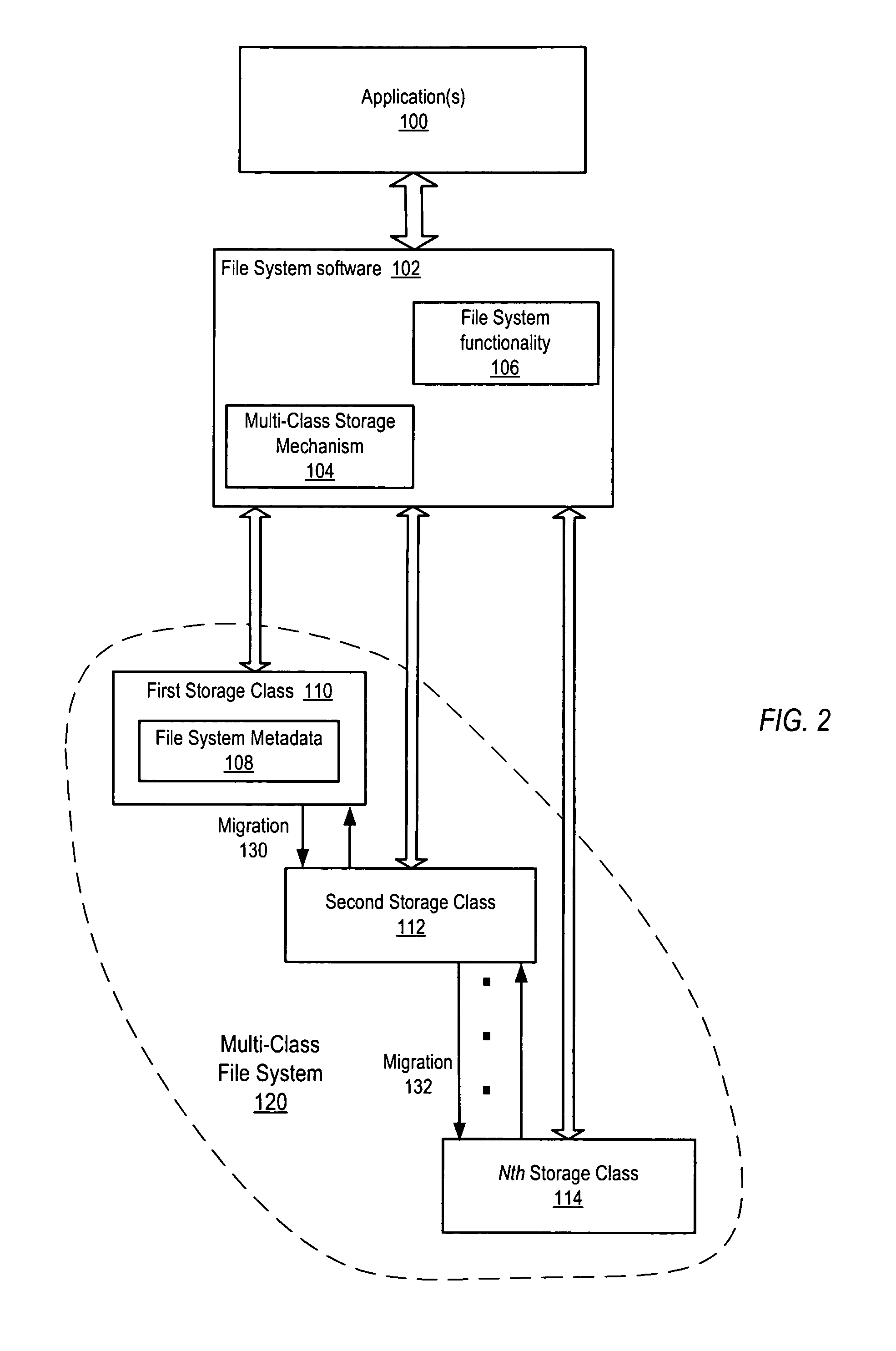Dynamic storage mechanism
a storage mechanism and dynamic technology, applied in the field of computer systems, can solve the problems of increasing storage costs, increasing storage costs, increasing storage budgets, etc., and achieve the effect of reducing storage costs and reducing storage costs
- Summary
- Abstract
- Description
- Claims
- Application Information
AI Technical Summary
Benefits of technology
Problems solved by technology
Method used
Image
Examples
Embodiment Construction
[0036]Embodiments of a system and method for implementing a file system across different classes of storage in a storage system are described. Embodiments may define multiple classes of storage and automatically and transparently migrate data between the storage classes within the same file system to meet the usage needs of the business. This data may be migrated as files or portions of files, and may include, but is not limited to, application data and / or file system metadata. Embodiments may be used to transparently adapt the cost of storage to the usage patterns of data on the storage, thereby reducing the amount that customers need to spend for their storage. In embodiments, storage devices may be classified into two or more different classes of storage to implement a multi-class file system. Embodiments may provide a multi-class storage mechanism for managing and implementing sets of user-defined policies for assigning and migrating data within the multi-class file system.
[0037...
PUM
 Login to View More
Login to View More Abstract
Description
Claims
Application Information
 Login to View More
Login to View More - R&D
- Intellectual Property
- Life Sciences
- Materials
- Tech Scout
- Unparalleled Data Quality
- Higher Quality Content
- 60% Fewer Hallucinations
Browse by: Latest US Patents, China's latest patents, Technical Efficacy Thesaurus, Application Domain, Technology Topic, Popular Technical Reports.
© 2025 PatSnap. All rights reserved.Legal|Privacy policy|Modern Slavery Act Transparency Statement|Sitemap|About US| Contact US: help@patsnap.com



